Last updated: November 1, 2021
Article
Subsistence: Hunting and Trapping
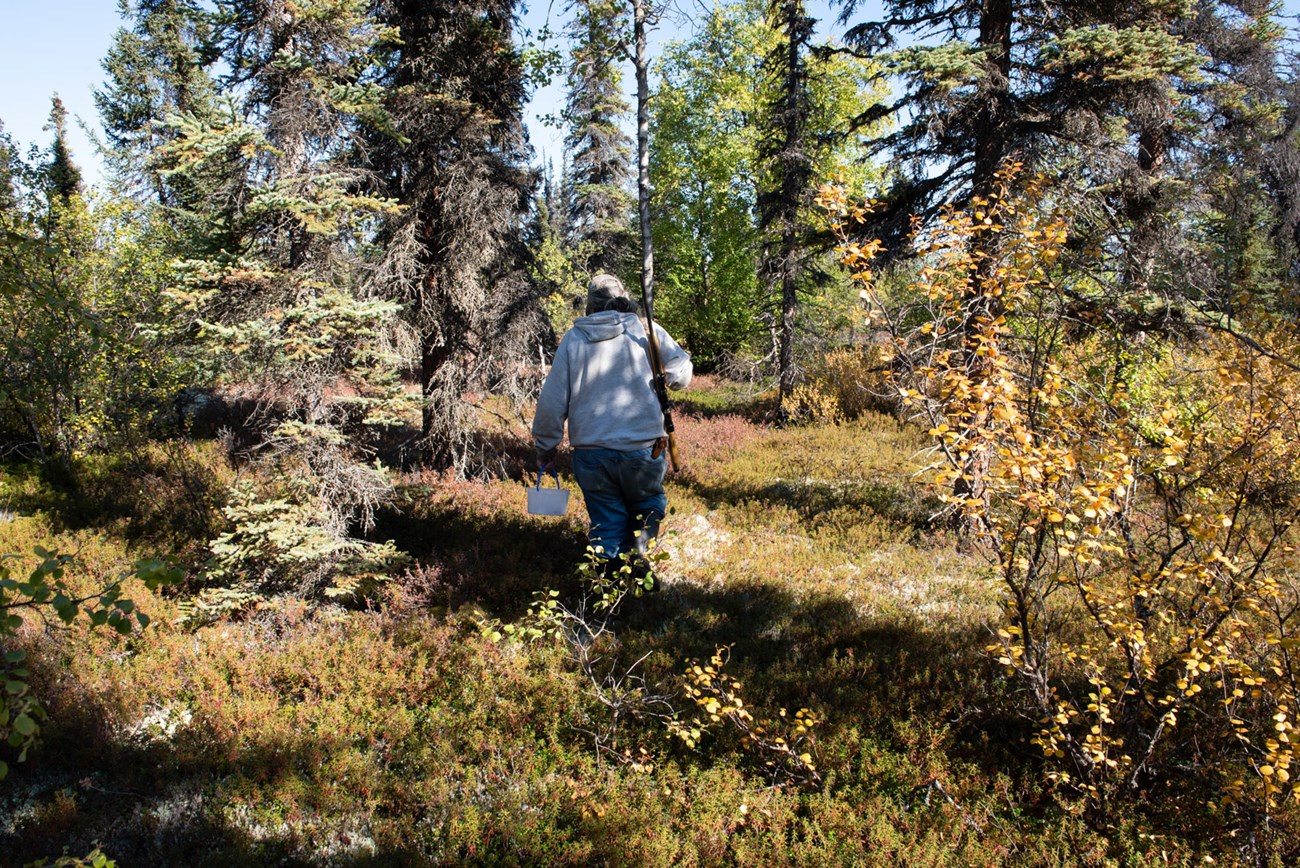
NPS/ D. Khalsa
Hunting
While salmon is a staple of inland Dena’ina diets, big game is also a cornerstone of traditional subsistence and cultural practice. Key to the diet are caribou and moose, and sometimes brown and black bear, as well as animals harvested largely outside the area such as Dall sheep. Nondalton residents attest that for the “people that live here [the hunting territory is] the only thing they have. We live to hunt."(Gary Alexie) Among these species, caribou and moose stand alone. These large animals may sometimes be elusive, but represent a remarkable payoff in terms of meat and other benefits, more than justifying the efforts of the hunt. Nondalton residents are expert in caribou and moose-based cuisine and make it into myriad dishes to the exclusion of introduced foods. In every Nondalton household, the meat is eaten fresh, but also preserved for consumption at a later time—a practice with a long history.
These hunts are not only important for the food they provide, but for the maintenance of community cohesion and identity. People eagerly look forward to the arrival of key subsistence events—fishing at Fish Camp or the beginning of hunting season—and are animated by their arrival. The events are “like a biological clock.” “We look forward to that. We’re excited about it…you don’t have to think about it, it’s just like ‘Yes, it’s coming. We get to do this again, finally.’” (Randy Kakaruk) As interviewees attest, Hunting and fishing are also among the main things that bring Dena’ina families together with a shared task and sense of common purpose: “My son lives in Anchorage but he’d come back every year to go hunting." (Gary Alexie) Meat obtained through the hunt is also redistributed throughout the community. In this way, hunting is at the foundation of inland Dena’ina community, culture, and economy, and is essential for the continuity of Dena’ina life.
“I don’t mind people hunting. I don’t want to say it’s our area, but I consider it our area you know… if they’re going to be hunting where we go, at least respect what we have up here…they used to [just pick] which one you wanted to get. Last year we were up there for almost two and a half weeks and we only seen one [moose]…they used to be around every bend and corner there used to be a moose everywhere." –Randy Kakaruk
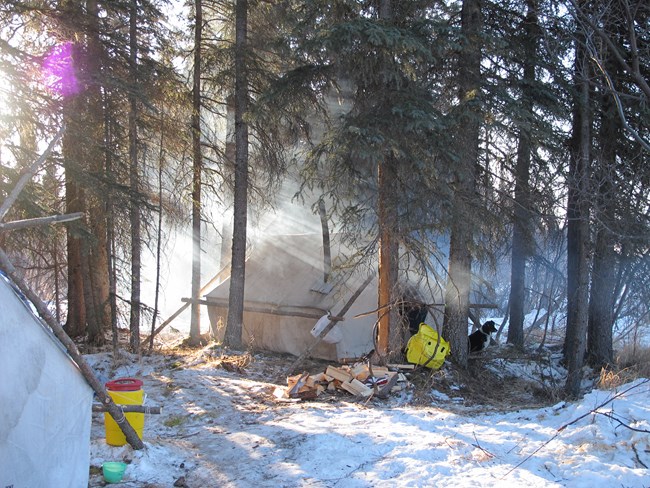
NPS/ K. Evanoff
Trapping
The trapping or hunting of small land animals for food, fur for personal use, and for income is a time-honored Dena’ina tradition, and remains important throughout today. Historically, and to some extent today, the furs of small land animals have been important in the construction of clothing and winter items (e.g, mittens, hats, parkas, etc.) that are much-needed as protection against cold winter temperatures. In the past, trapping fur bearing animals, generally in the winter, has also provided a primary source of income.
Historically, men, women, and children trapped throughout the year. Beaver, ground squirrels, porcupine, “rabbits” (snowshoe hare), Alaska hare, muskrat, marmot, red and cross fox, marten, short-tailed and least weasel, mink, wolverine, river otter, and lynx are all traditionally utilized by the Dena’ina people for food and clothing. Furs and materials made from these animals serve as a source of income, and remain an important part of traditional crafts including those used in ceremony. Roughly half of the households participate in some kind of trapping or other small mammal harvests for these purposes today.
Trappers still possess an extraordinarily detailed knowledge of trapping, and use their skills to ensure the harvest is targeted, bringing no harm to non-target species.
“Beaver…That’s what I usually catch first in the fall times…. I get a beaver and I save the catch then I use the castor for catching the lynx and the wolverines. Because most of time if you use like scraps and bait and stuff, it draws the birds and the birds see the scraps or whatever and then you catch a magpie or a crow or whatever…in your trap and you don’t want that to happen. So beaver catch was better because you don’t have any bait laying there for the birds to see and then snaps your trap. Most of the time if I use bait, I just—like a piece of moose hide or something, I just dig a hole that deep and put it underneath the ground and just have a little bit of it underneath the ground far enough so the birds couldn’t see it but the wolverine will smell it. …The trick is you catch a beaver first and then you got bait for all the other animals.” –Clarence Adam Delkettie
PDF, 124 pages (14.6 MB)
Read the Traditional Use Study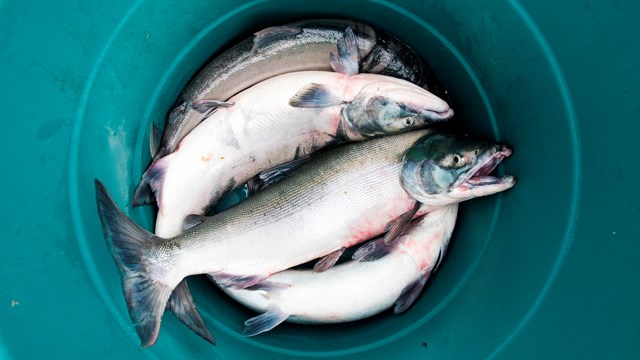
Explore the cultural tradition of fishing for salmon at fish camps.
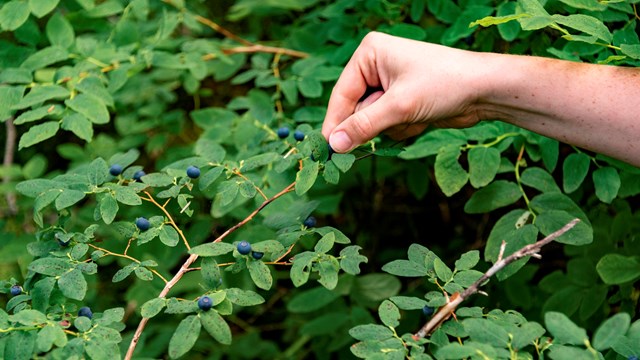
Harvest more knowledge on traditional uses of local plants.
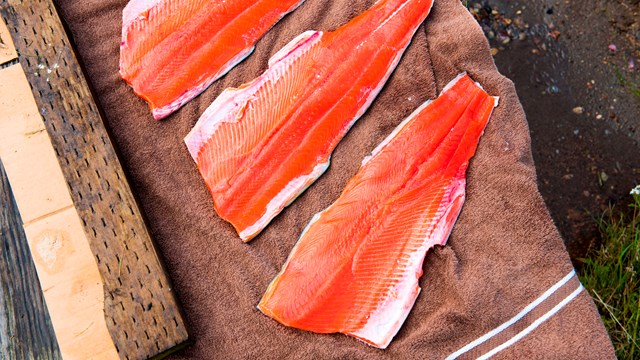
Discover how inland Dena'ina people sustainably live from the land.
